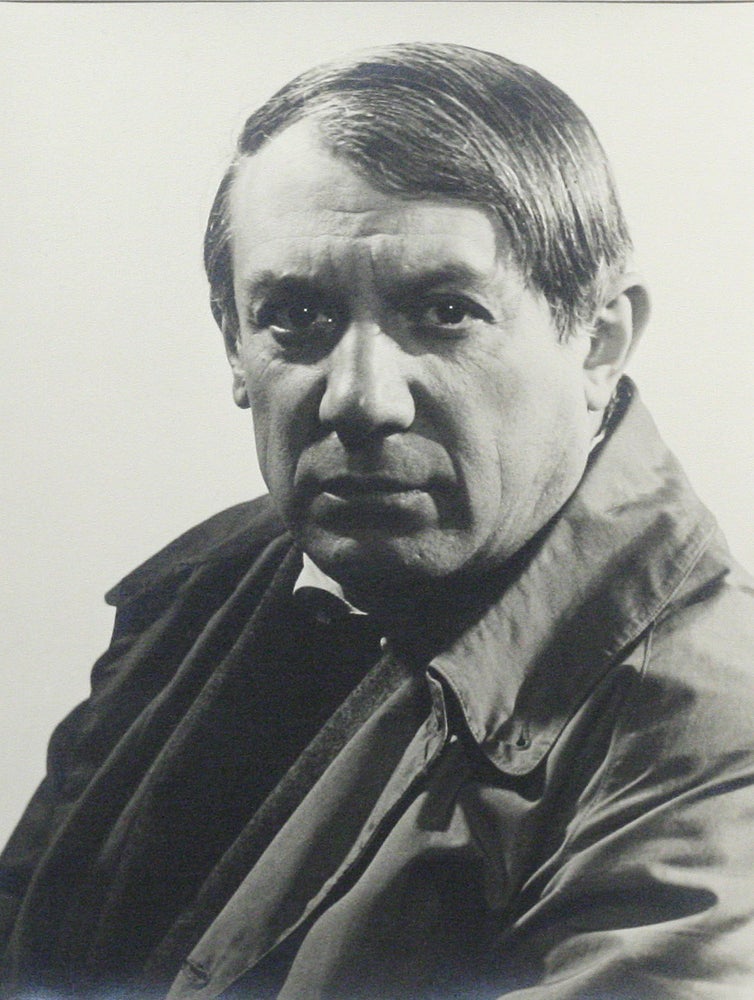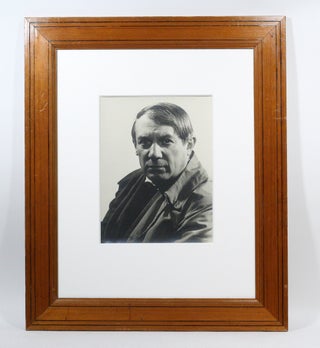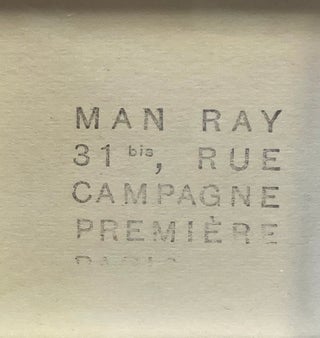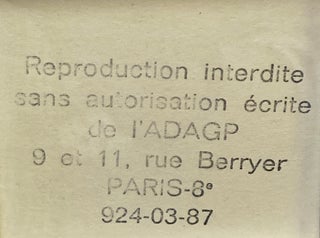Photograph: Portrait of Picasso
“Being both inventive and methodical is key to Ray’s talent as a photographer. He was a first-rate portraitist, creating flattering images by shooting from a distance, then cropping and enlarging the image, which softened flaws yet captured facial proportions accurately. But overall, I’d say, it was his wit—his unconventional approach to conventional subjects—that distinguishes him.”
-Arthur Lubow, Man Ray: The Artist and His Shadows
“[Man Ray was] the great poet of the darkroom.”
-French Poet Jean Cocteau
MAN RAY CAPTURES PICASSO’S ESSENCE IN LEGENDARY PORTRAIT. AN ICONIC PHOTOGRAPH WITH IMPORTANT PROVENANCE: From the famous Sotheby’s sale of 1995 of items from the “Estate of Juliet Man Ray, The Man Ray Trust and the Family of Juliet Man Ray”.
The son of Russian-Jewish immigrants, Emmanuel “Manny” Radnitzky (1890-1976) grew up in Brooklyn, New York. He displayed creative abilities from a young age and studied to be a painter. He adopted “Man Ray” as his pseudonym and in 1915 formed the New York group of Dada artists with Marcel Duchamp. In the 1920s and 1930s, Paris was the destination for the international avant-garde, offering an exceptional number of galleries, art dealers, and wealthy patrons who promised artistic freedom. Man Ray sailed to the “City of Light” in 1921, joined Parisian Dada and Surrealist circles and became intimate associates with Pablo Picasso, Max Ernst and other leading artists. He pursued fashion and portrait photography creating a pantheon of the city’s cultural life. “As a photographer, I was in demand,” Ray explained to John Bainbridge, a writer at The New Yorker. “I was like a doctor. Everybody needed me.” (Bolz) To be photographed by Man Ray meant you had made it in the Parisian art world.
Ray often said that Old Masters, especially Hans Holbein the Younger, Rembrandt, and Vermeer inspired his portraits. “I… admired the respect with which they treated the proportions of human features,” he wrote in an article published in Modern Photography magazine in November 1957. He also made considerable technological advancements in the field by creating “rayographs” (photographic images composed of ordinary objects placed on photo sensitive paper exposed to light) and developing solarization (the process of tone reversal observed in cases of extreme overexposure). “I photograph the things that I do not wish to paint, the things which already have an existence,” Ray said. (Schwarz, 10) Ray sought to create a sense of drama and mystery, believing that his photography could transcend the mechanical nature of a camera.
When photographing his friends and colleagues Ray’s emotional and psychological insights allowed him to expose the soul of each subject. One such subject and friend was Pablo Picasso. Man Ray and Picasso met in 1921 in Paris. They became friends through their connection to Surrealism, spending holidays together and collaborating on creative pursuits. In his autobiography, Man Ray described Picasso: “[He] gave me the impression of a man who was aware of all that was going on about him and in the world in general, a man who reacted violently to all impacts, but had only one outlet to express his feelings: painting.” (Man Ray, 177) The intensity and awareness that Man Ray described is masterfully captured in his portraits of the painter.
This photo we have on offer is from Man Ray’s renowned series of Picasso portraits and coincided with the publication of the first volume of Picasso’s catalogue raisonné, reflecting the critical position Picasso’s work occupied in the French artistic establishment. In this almost sculptural photograph from 1932, Man Ray unusually presented Picasso in an open trench coat over his jacket and tie. Picasso’s dark hair is slicked down and his smooth face looks directly into the camera. Ray used light on the outlines of Picasso’s face to create a contemplative image that showed him as a dark and shadowy figure juxtaposed against the light background. Picasso’s riveting gaze also conveys a reflective and sober mood. This print has the Man Ray stamps M28 and M30 on the reverse and was lot 348 from the sale of the “Estate of Juliet Man Ray, The Man Ray Trust and the Family of Juliet Man Ray” (Sotheby’s March 22 and 23, 1995).
Man Ray and Picasso remained close confidantes after this collaboration and during the summer of 1937, Man Ray filmed his friends, including Pablo Picasso, during a trip to the French Riviera. The result was On the French Riviera with Man Ray and Picasso, a documentary film which portrayed the friendship of Picasso and Ray at the center of a close-knit community of artists.
German occupation led Ray to leave Paris for the United States in 1940. He lived and worked in New York and Los Angeles returning to Paris in 1951 and resuming his friendship with Picasso and other artists. Ray died in Paris in 1976 yet his creativity and innovative techniques, which demonstrate the distinctive cultural landscape of Paris during the interwar period, had a substantial influence on contemporary art. Contributing to magazines like Vogue, Vanity Fair, and Harper’s Bazaar, he paved the way for Richard Avedon, Annie Leibovitz and other artistic photographers. Ray achieved international recognition for his photography, which he elevated to an art form. On May 14, 2022 Man Ray’s Le Violon d'Ingres (1924) sold for $12.4 million, setting a new world record as the most expensive photograph ever sold at auction.
He was a masterful portraitist, renowned for capturing the essence of his subject’s personality and mood. This collaboration between two of the most prolific, creative and eclectic artists of the twentieth century had truly spectacular results.
Provenance: Sotheby's London, 22nd and 23rd March 1995 [Lot 348]: “Property of the Estate of Juliet Man Ray, The Man Ray Trust and the Family of Juliet Man Ray.”
Image/Print Size: 9 x 11 3/4 in. Elegantly framed with wooden frame under UV-protecting museum glass to an overall size of 20 ½ x 24 ½ inches.
Paris: 1932; printed later. Silver print. With Man Ray stamps on reverse: M28 and M30 - 'Man Ray 31 bis, Rue Campagne Première Paris XIVe' and the copyright stamp ADAGP. Fine condition.
References:
Diane M. Bolz. “Visual Moment: Man Ray in Paris.” Moment Magazine. Winter Issue 2022.
The Editors of Encyclopaedia Britannica. “Man Ray.” Encyclopedia Britannica. 14 Nov. 2022.
Arthur Lubow. Man Ray: The Artist and His Shadows. New Haven: Yale University Press, 2021.
Man Ray. Photographs by Man Ray: 1920 Paris 1934. Hartford: James Thrall Soby, 1934.
Man Ray. Self Portrait. London: Bloomsbury, 1988.
Man Ray and Jean-Hubert Martin. Man Ray Photographs. London: Thames and Hudson, 1982.
Arturo Schwarz. Man Ray: The Rigour of Imagination. London: Thames and Hudson, 1977.
Slate Photo. “Man Ray’s Portraits.” Slate Magazine. February 6, 2013.
Alden Whitman. “Man Ray is Dead in Paris at 86; Dadaist Painter and Photographer.” The New York Times. November 19, 1976.
Price: $35,000 .





